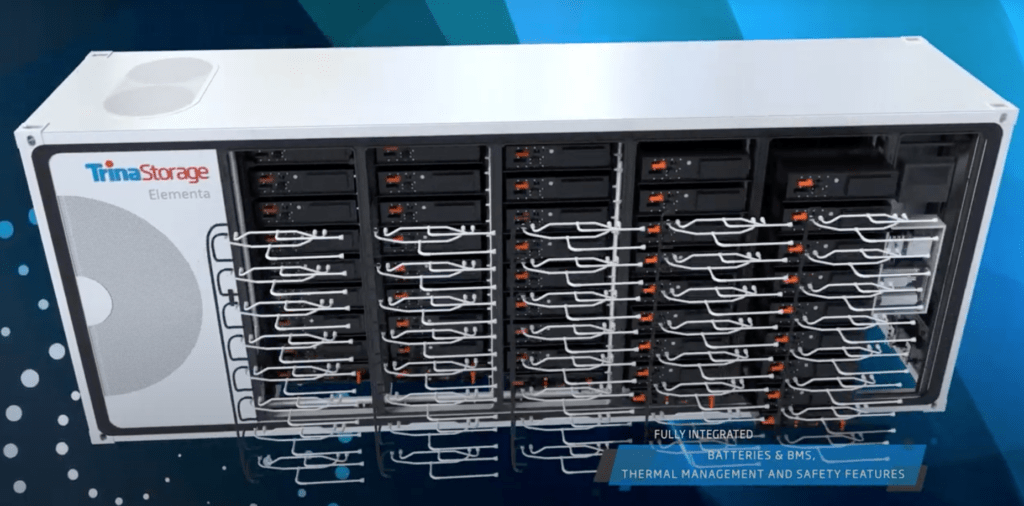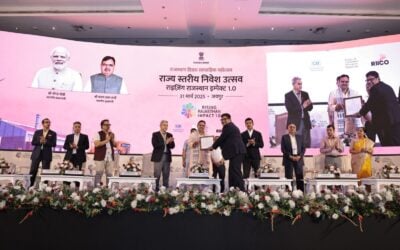
Trina Storage, the battery energy storage arm of solar PV manufacturer Trina Solar, is developing an energy management system (EMS) as a major strategic priority for its business.
Energy-Storage.news spoke with Terry Chen, head of overseas and distributed generation activities at Trina Storage, who said the EMS should be ready and integrated with customer projects before the end of this year.
Enjoy 12 months of exclusive analysis
- Regular insight and analysis of the industry’s biggest developments
- In-depth interviews with the industry’s leading figures
- Annual digital subscription to the PV Tech Power journal
- Discounts on Solar Media’s portfolio of events, in-person and virtual
Chen was meeting with the site for an interview at this week’s Energy Storage Summit EU, hosted in London by our publisher Solar Media. Trina Storage officially launched at the 2021 edition of the show, and at last year’s edition unveiled the first completed 50MW project it delivered, for UK developer SMS in Cambridgeshire, England.
The UK’s highly active battery energy storage system (BESS) market is currently Trina Storage’s main area of focus, with about 10 projects to be delivered using its Elementa first generation containerised grid-scale BESS solution.
At the same time, the company is also scaling up its presence in the US market. That includes consideration of where to put production plants, leveraging the available Inflation Reduction Act-driven incentives.
That investment in manufacturing would be likely to include lithium iron phosphate (LFP) battery cells, while at the same time the company has also been on a recruitment drive to build up its integration capabilities, especially on energy management system (EMS), SCADA and plant controller technologies.
While based in the US, the engineering and R&D centre covers the global market, Chen said, and the EMS being developed in-house is expected to be ready by the end of this year. That will be an important differentiator for the company in an increasingly crowded market, he said.
“We do OEM manufacturing, we also see ourselves as a solution provider. [For that], we need to build up strong integration capabilities, because currently customers are still not fully ready for integration jobs, which are still very complicated,” Terry Chen said.
“When you look at a system, [they] probably think, ‘Okay, I just buy some cabinets, buy some battery, plus power conversion system (PCS), and EMS and put them together and call them integrated’. But the fact is no: because all of those technologies need to be organically designed and tested and also connected, otherwise they cannot work properly, it will bring a lot of issues during the project’s operational stages. From our perspective, the solution still has a huge value add, but the value currently is not being recognised.”
Vertical integration strategy
China-headquartered Trina Solar, a member of the Solar Module Super League of major manufacturers – a term coined by our colleagues at PV Tech – is highly vertically integrated in its solar PV module manufacturing business to capture the full economic value of everything from raw materials to finished products.
For Trina Storage however, it’s as much, if not more, about capturing the technical benefit for the customer, according to the head of overseas business.
Having EMS know-how means greater standardisation of solutions from project-to-project will be possible, reducing the amount of customisation required, with the EMS defining the protocols through which the different components work together.
“So, for Trina, EMS first is a must-have, but also the manufacturing capability is a must-have because you need to take control over the technology, supply chain and also cost. From a technical perspective, that’s a must-have. If you don’t have that deep understanding on the technology, especially the cell technology, you don’t know how to integrate into the system.”
Chen also said that more BESS-specific products, particularly battery cells, need to be developed, rather than the industry leaning for the most part on standard lithium cells of the type also used by the EV industry. Announcements on the company’s cell manufacturing strategies are expected soon, he said.






